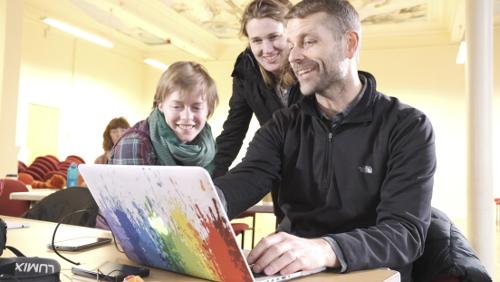
We ventured out into the city of Manchester with our cameras to get some footage which we would then edit into short films.
On 9 November, the Campaign for Nuclear Disarmament (CND) and Pugwash collaborated to bring a DIY video-making workshop to a group of social justice activists in Manchester.
The intention was to offer the tools to make short, dynamic videos on camera and smartphones that will benefit the peace movement.
"Put your camera at the eye level of the person you’re interviewing, so you’re equal”
CND and Pugwash recruited two professionals, Alex Mannion-Jones and Liam Acton who, between them, have skills in filmmaking and editing. The workshop was well delivered, with a good mix of theory and practice.
The attendees came from various backgrounds and skill levels, representing several organisations and grassroot groups.
I attended as a community organiser in my city, eager to learn so that I can produce simple videos that tell powerful stories. I believe that video is a great medium for building community empowerment, and for giving a platform to voices and messages that may otherwise not be represented in the media.
Skill-sharing among community organisers is so key right now. It is important to share knowledge not only to enrich our own activism, but also to create ripples in our communities, which is at the heart of creating positive change. I have already started on my first video and look forward to sharing what I have learned with others.
Top Tips
Here are my Top 10 Tips from the workshop:
- Intention – Think about who we are making the video for and what impact we want to have.
- Planning – Visualise the idea. Create a storyboard where possible. (A storyboard is like a cartoon strip of drawings showing what will be in the video – ed.)
- Sound – The most important aspect! Get as close to the source as possible. If you’re using a smartphone, use earphones with a microphone on to block out outside noise better.
- Image – Think about composition (how you place things on screen) and put the camera at the eye level of the person you’re interviewing, so you’re equal.
- Lighting – To create more depth, put a (key) light at the front, a (fill) light at the side and a back light. This can be as simple as lamps and tinfoil!
- Thinking backwards – Help the editing process by taking a variety of shots and material when you’re filming.
- Smartphone – Hold the phone in landscape mode – hold it steady. Be prepared with a charged battery! Check out apps like RØDE Rec LE (audio) and Filmic Pro (video).
- What makes a good edit – Use clear image and sound, well-chosen music and ensure fair representation of people in the video. You could use DaVinci Resolve or Shotcut to edit your video – both are free and work on Windows 10, macOS or Linux.
- What you need – An editing computer and software and two places to store your footage in case one gets lost!
Remember to have spare batteries and spare memory cards and get to know your equipment’s limitations.
Remember, it is the story and the motivation for the video that is important, rather than fancy equipment. Anyone with a smartphone can make videos!

